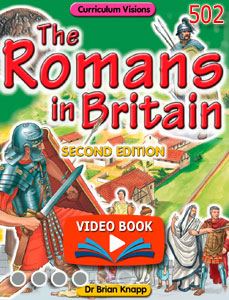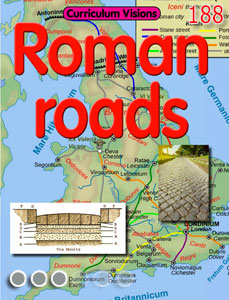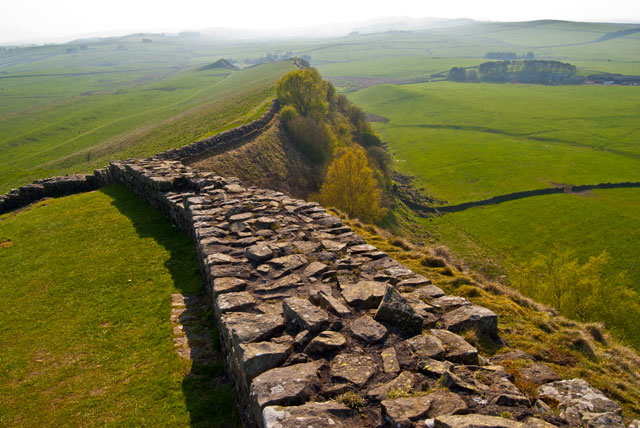Hadrian's Wall is one of the largest man-made things ever built. It was the most heavily defended of all the borders of the Roman Empire.
Just before Hadrian arrived in Britain (known as Britannia) there had been a major revolt. Hadrian built the wall "to separate Romans from barbarians", it was said in a history of the time. The Romans used the term 'barbarians' to mean anyone who was not within the Empire.
Its job was to control the movement of people across the border, both trade and people.
The wall is mainly made from stone blocks taken from local quarries. Building materials are heavy and not easily transported. So most people make structures out of whatever was local.
It is likely that stone was not the first choice of the Romans. Their other borders were built with wooden posts (imagine something like a Wild West fort). But in this highland area trees do not grow well, and so there was a limited amount of suitable timber, and certainly not sufficient to stretch right across the neck of Britain.
In fact, for the same reason, stone was not used for the entire length of the wall. Anyone who walks from east to west along the Wall will know that it seems to vanish as it approaches Carlisle. This is because the western third of the wall, from the Solway Firth, west of modern-day Carlisle to the River Irthing on the edge of the Pennines, was built of turf. That was because there was not sufficient local wood or stone!. It was a struggle getting turf, too. So whereas the majority of the wall was 3m wide, in the turf section it was 6m wide because turf cannot stand up as well as stone.
The Romans did not call it Hadrian's Wall. They called it Vallum Aelium, which means the Wall of Aelius, which was Hadrian's first name.
Hadrian's Wall was 117km (73mi) long. Much of it was 3m wide and 6m high.
All along the wall were forts and gates.






